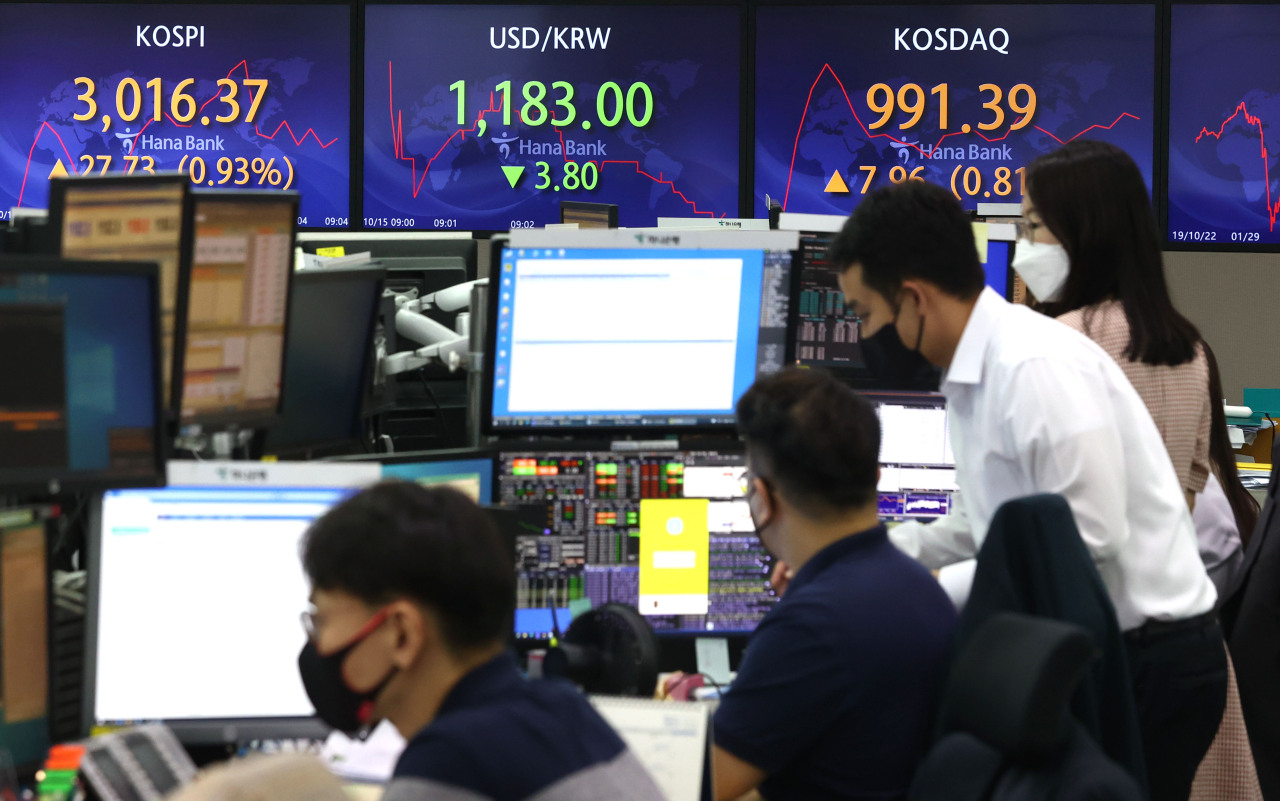 |
Dealers look at monitors at Hana Bank headquarters in central Seoul on Friday morning, as both South Korea's benchmark Kospi and tech-heavy traded lower. (Yonhap) |
As South Korea’s benchmark Kospi plunged below 3,000 points last week for the first time in nearly seven months, the daily volume of forced selling of stocks by local brokerages reached a 14-year high.
The daily average amount of forced liquidations marked 26.5 billion won ($22.4 million) from Oct. 1 to Thursday, according to data compiled by the Korea Financial Investment Association. It marked the highest level since April 2007, when the daily average volume came to 29 billion won. The figure also far outpaced the record seen during the pandemic-hit market in March last year with 16.3 billion won.
Brokerages have the right to sell off borrowed shares if investors fail to maintain a certain ratio of share collateral due to falling stock prices. They dispose of investors’ stocks to make up the balance, and since this happens when prices are depressed, investors make losses.
On Wednesday, when the key index fell 1.82 percent to close at 2,908.31 points -- the lowest finish since Dec. 30 last year -- bids were placed at the price floor of more than 90 Kospi-listed stocks simultaneously at around 8:40 a.m. It was the third consecutive session that saw the index skid more than 1 percent.
Total losses of retail investors due to forced selling are expected to soar even more since the Kospi is likely to stay in a box pattern for a while, market watchers said. They forecast the index will move in a tight range between 2,900 points and 3,030 points this week.
NH Investment & Securities analyst Kim Young-hwan said the domestic stock market has “wave heights” to deal with this week. The US Federal Reserve’s signal over tapering of its timeline for stimulus is one of the major market variables, he said.
“After checking on the event, the local stock market may show a strong rebound with expectations for an accelerating economic recovery linked to improving manufacturing sector and development of COVID-19 treatments,” Kim said. “But until then, the Kospi index is likely to stay in a box pattern.”
Although listed firms’ robust third-quarter business results are expected, investors’ concerns over earning peak-out are posing risks as well, the analyst said. A handful of Kospi-listed companies are set to release their quarterly earnings this week but the corporate earnings report season is not enough to improve momentum, he added.
By Jie Ye-eun (
yeeun@heraldcorp.com)








